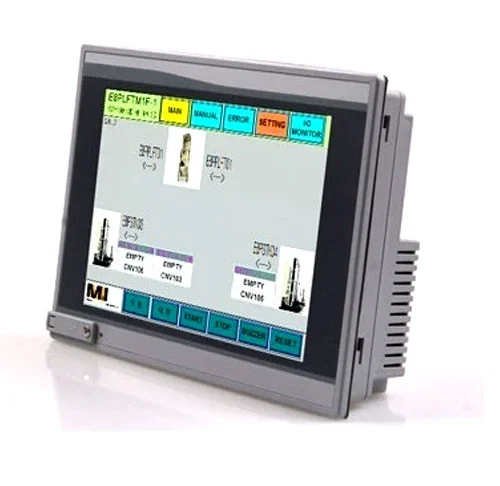
An HMI (Human-Machine Interface) display is a screen that allows people to interact with machines and systems. It helps operators control and monitor processes, making it essential in many fields like manufacturing, cars, healthcare, and home electronics.
Main Features of HMI Displays
- Touchscreen Interface:
- Most HMI displays have touchscreens, making them easy to use. Operators can tap the screen to give commands, check information, and control systems.
- Visual Feedback:
- These displays show data visually through graphs, charts, and animations. This makes it easier for operators to understand what’s happening and respond quickly.
- Real-Time Monitoring:
- HMI displays provide live updates, helping operators make quick decisions and take action when needed.
- Data Logging and Reports:
- They can record data over time and create reports. This helps in analyzing performance and finding ways to improve.
- Customizable Interface:
- Users can customize the display to meet their needs, like setting up alerts and adjusting controls.
Uses of HMI Displays
- Factories:
- In manufacturing, HMI displays help control machines, monitor production, and ensure safety.
- Cars:
- In vehicles, these displays provide navigation, entertainment, and system checks, making driving easier and more enjoyable.
- Healthcare:
- Medical devices with HMI displays allow doctors and nurses to operate equipment accurately and monitor patients.
- Home Electronics:
- HMI displays in smart home devices make them easier to use, providing simple controls and feedback.
Benefits of HMI Displays
- Better Efficiency:
- They help improve efficiency by providing real-time information and control, reducing delays, and increasing productivity.
- Increased Safety:
- HMI displays can include safety features like alarms and emergency shutoffs, helping to prevent accidents.
- Easy to Use:
- Their user-friendly design makes them easy to learn and use, reducing mistakes and training time.
- Informed Decisions:
- With access to detailed and live data, operators can make better decisions quickly.
Future of HMI Displays
- Augmented Reality (AR):
- AR could make HMI displays more interactive and engaging, improving how we interact with machines.
- Voice Commands:
- Voice recognition could allow operators to control systems without using their hands, making it safer and more convenient.
- Artificial Intelligence (AI):
- AI could enhance HMI displays by predicting maintenance needs, suggesting actions, and adapting the interface based on user habits.
Conclusion
HMI displays are essential for connecting people with machines. As technology advances, these displays become even more useful, making our interactions with devices and systems easier, safer, and more efficient. Whether in factories, cars, healthcare, or home electronics, HMI displays are changing how we operate and manage technology.
Tags : hmi display nma groupCategories : NMA Group


